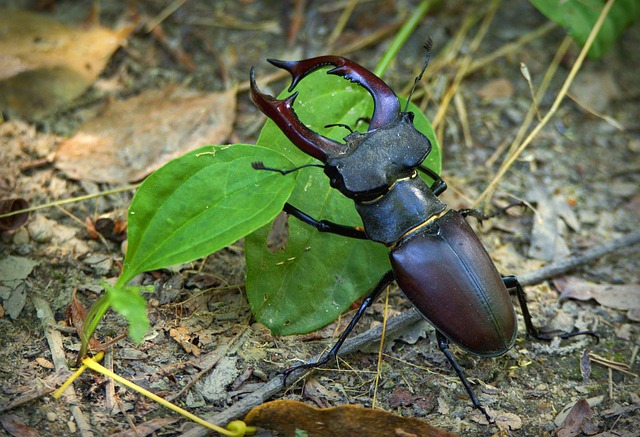Understanding foreign grain beetles' behavior and habitat is crucial for effective beetle control solutions. These pests are attracted to stored grains in dark, humid areas, infesting quickly and causing economic losses. Prevention strategies include facility assessment, sealing entry points, regular maintenance, sanitation, physical barriers, monitoring systems, and Integrated Pest Management (IPM). Regular inspections, early detection, targeted treatments, and improved storage conditions are key to minimizing infestations and protecting crop yields.
In the agricultural realm, preventing foreign grain beetles is paramount for maintaining grain quality. This comprehensive guide offers tailored plans for long-term beetle management. We explore the behavior and habitat of these pests, emphasizing understanding their entry points within facilities. By implementing effective strategies, regular monitoring, and swift response mechanisms, farmers can secure robust beetle control solutions. Discover practical steps to safeguard your grains from these persistent intruders, ensuring a thriving harvest year-round.
Understanding Foreign Grain Beetles: Behavior and Habitat
Understanding foreign grain beetles involves recognizing their behavior and habitat, which are key factors in developing effective beetle control solutions. These pests are attracted to stored grains and seeds, often finding shelter in dark, humid areas within warehouses, silos, and granaries. They are known for their ability to quickly infest large quantities of grain, causing significant economic losses for farmers and agricultural businesses.
Beetles display a particular preference for products like wheat, corn, barley, and oats, making them a common menace in food storage facilities. Their lifecycle includes several stages—egg, larva, pupa, and adult—and they can remain dormant during unfavorable conditions, only to emerge when suitable habitats are available. This adaptability makes it crucial to implement preventive measures that address all life stages to ensure long-term control.
Assessing Your Facility for Beetle Entry Points
To develop a customized plan for long-term prevention of foreign grain beetles, the first step is assessing your facility for potential entry points. These insidious pests can infiltrate through seemingly small openings, so a thorough inspection is crucial. Look for cracks in walls, gaps around doors and windows, or any other signs of damage that could allow beetle access. Pay close attention to areas where grains are stored, as these are prime targets.
Effective beetle control solutions often begin with sealing off visible entry points using appropriate materials like caulk or metal mesh. Regular maintenance checks should be conducted to identify and address new or reopened pathways. By proactively securing your facility, you significantly reduce the risk of foreign grain beetle infestations, ensuring the integrity of your stored grains and minimizing the need for costly pest control interventions.
Implementing Long-Term Prevention Strategies
Implementing long-term prevention strategies is key to safeguarding against foreign grain beetles, ensuring sustainable agricultural practices. This involves a multi-faceted approach that goes beyond immediate control measures. One effective method is integrating robust sanitation protocols; regular cleaning and proper waste management reduce beetle habitats, disrupting their life cycles. Additionally, implementing physical barriers like sealed storage containers and automated ventilation systems creates an inhospitable environment for these pests.
Beetle control solutions should also focus on monitoring and early detection systems. Regular inspections coupled with pheromone traps provide valuable data on beetle activity, enabling farmers to take swift action. Furthermore, adopting integrated pest management (IPM) practices allows for the use of biological control agents like natural predators and parasites, offering a more eco-friendly approach to long-term prevention.
Regular Monitoring and Quick Response for Effective Beetle Control Solutions
Regular monitoring is a cornerstone of any effective beetle control solutions. By implementing a year-round surveillance program, agricultural professionals can detect the early signs of foreign grain beetle infestation before it escalates. This involves periodic inspections, especially during times when grains are most vulnerable, such as during storage and harvest seasons. Quick response mechanisms should be in place once beetles are identified. Prompt action, including targeted treatments and measures to improve storage conditions, can prevent the spread of these pests and protect crop yields.
In terms of beetle control solutions, a multi-faceted approach is ideal. This includes the use of traps, pheromone monitors, and regular cleaning of storage areas to remove any debris or grain remnants that might attract beetles. Integrated Pest Management (IPM) strategies, which combine biological, cultural, and chemical methods, offer sustainable beetle control solutions. By combining these tactics, farmers can create an environment less conducive to beetle breeding and infestation, thereby safeguarding their grains from these destructive pests.
Customized long-term prevention plans are key to managing foreign grain beetles, which demand a multi-faceted approach. By understanding beetle behavior, identifying entry points, and implementing robust strategies, facilities can create an inhospitable environment for these pests. Regular monitoring and swift response to any infestations are vital components of effective beetle control solutions, ensuring the longevity and integrity of stored grains.
